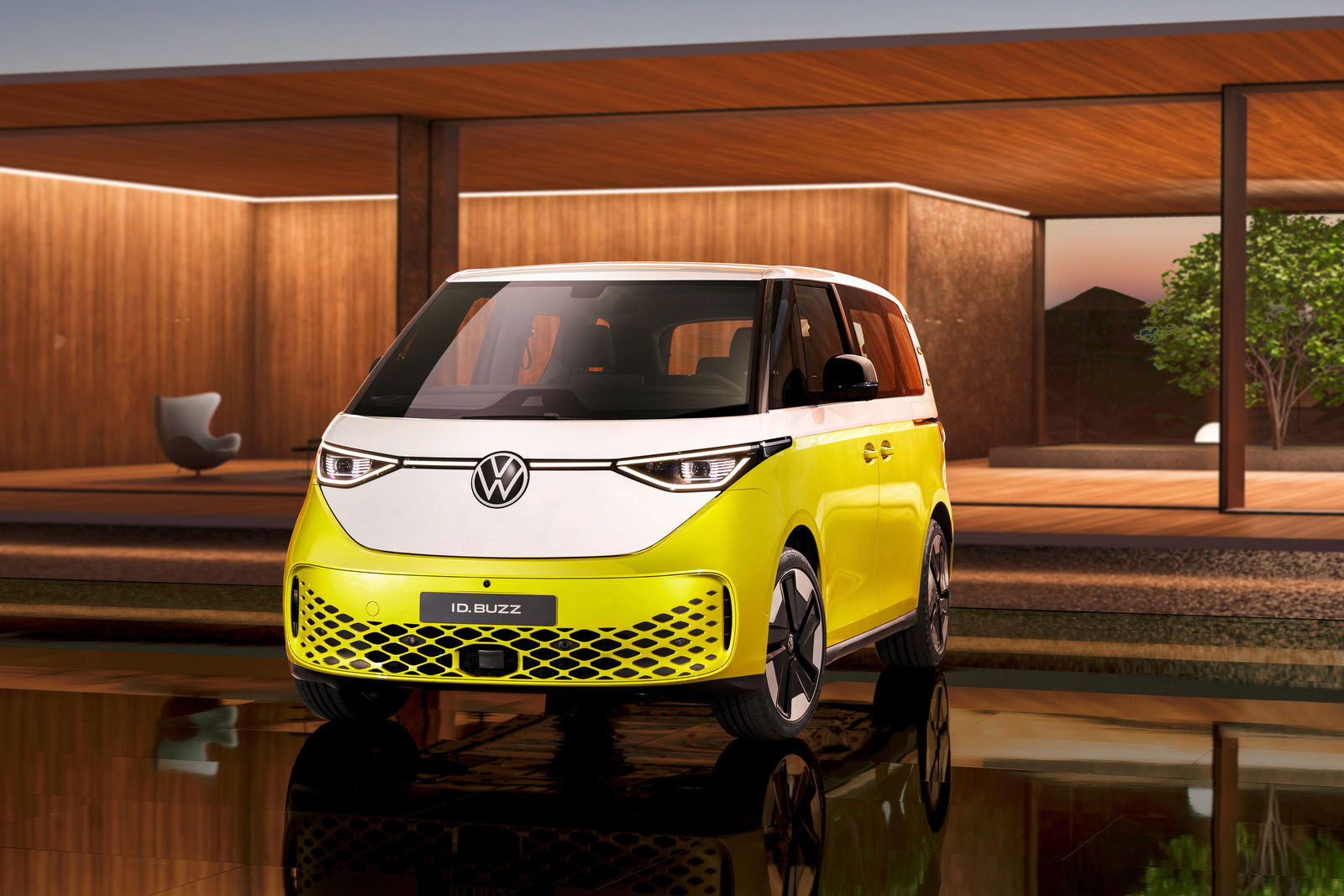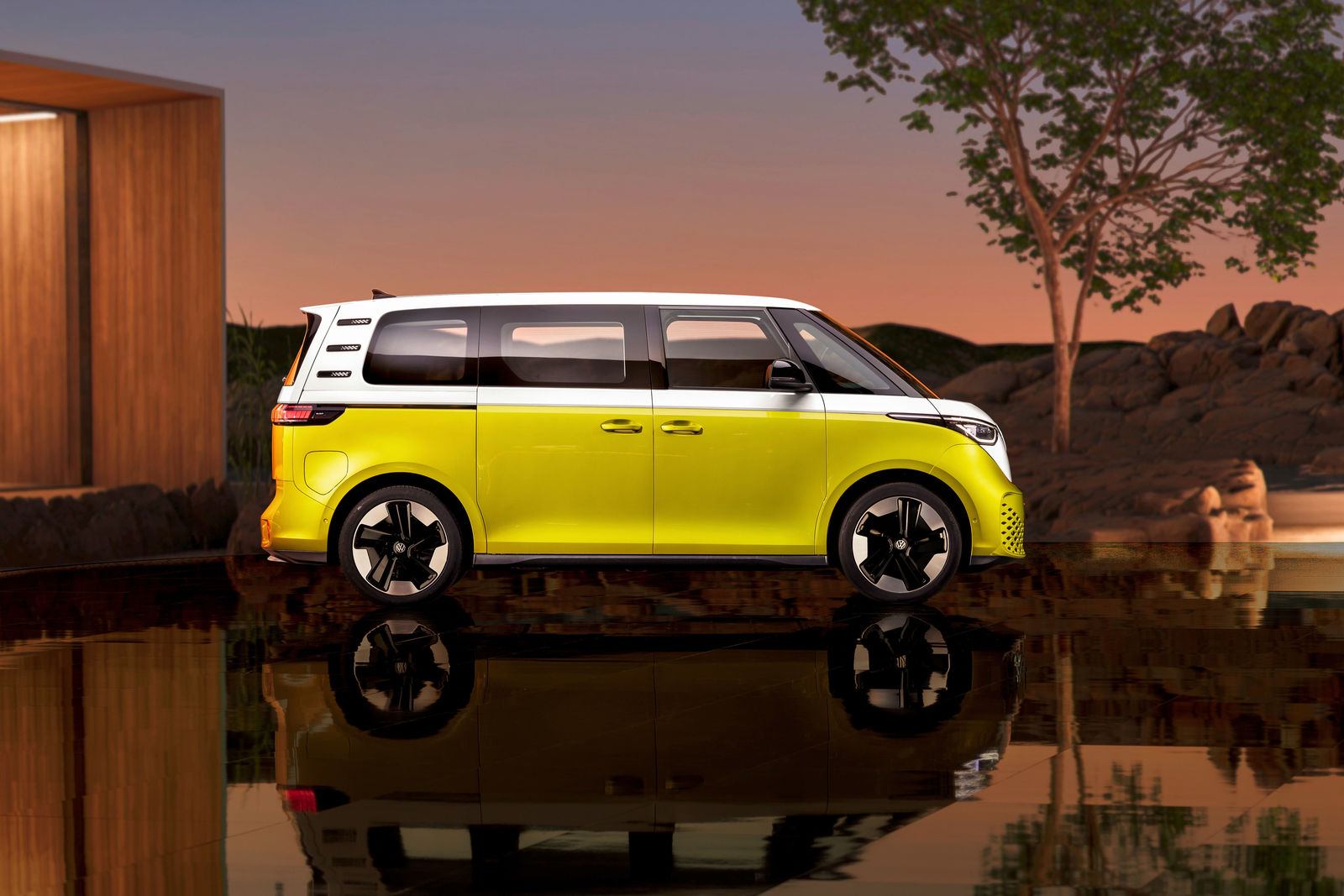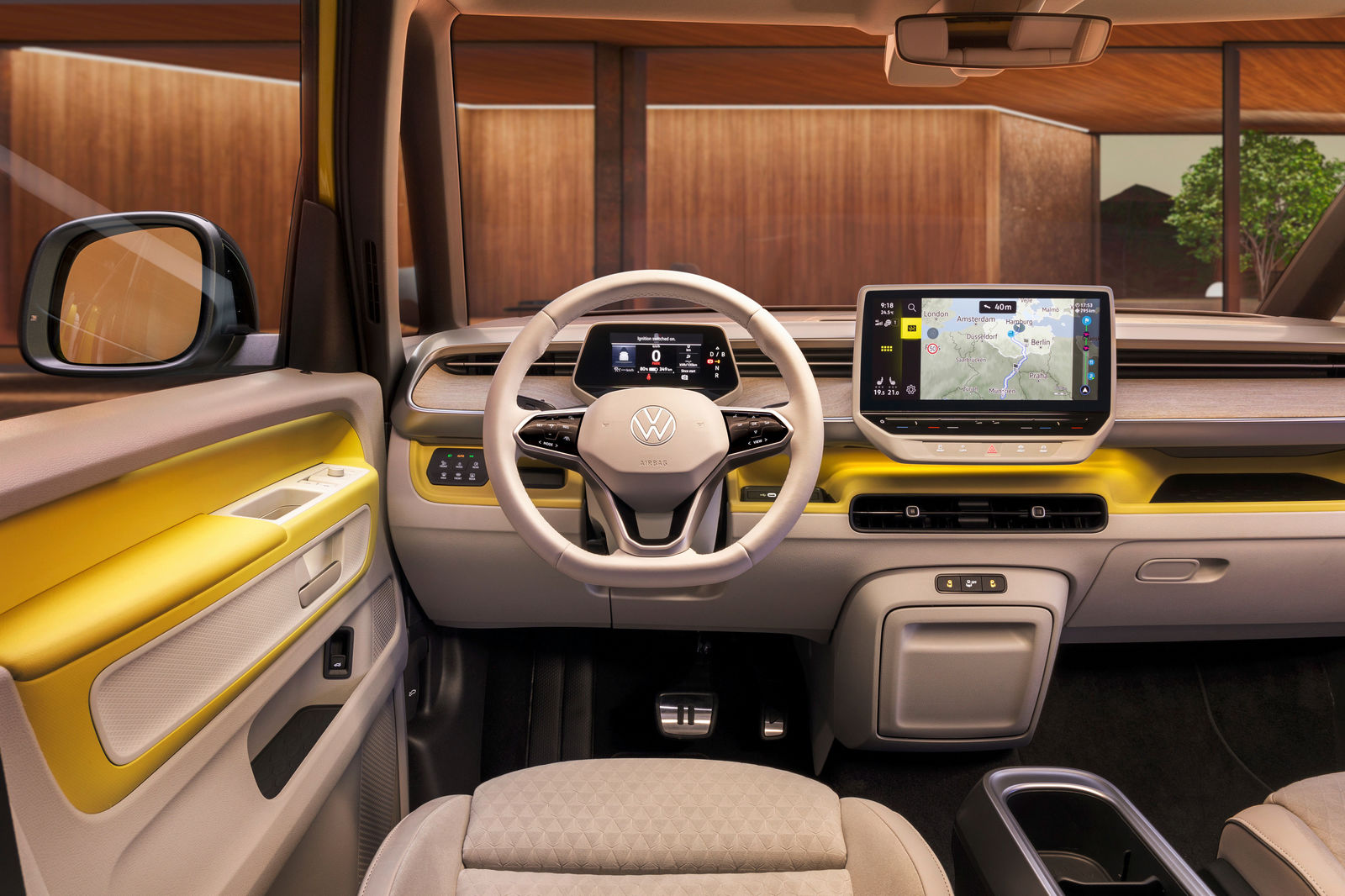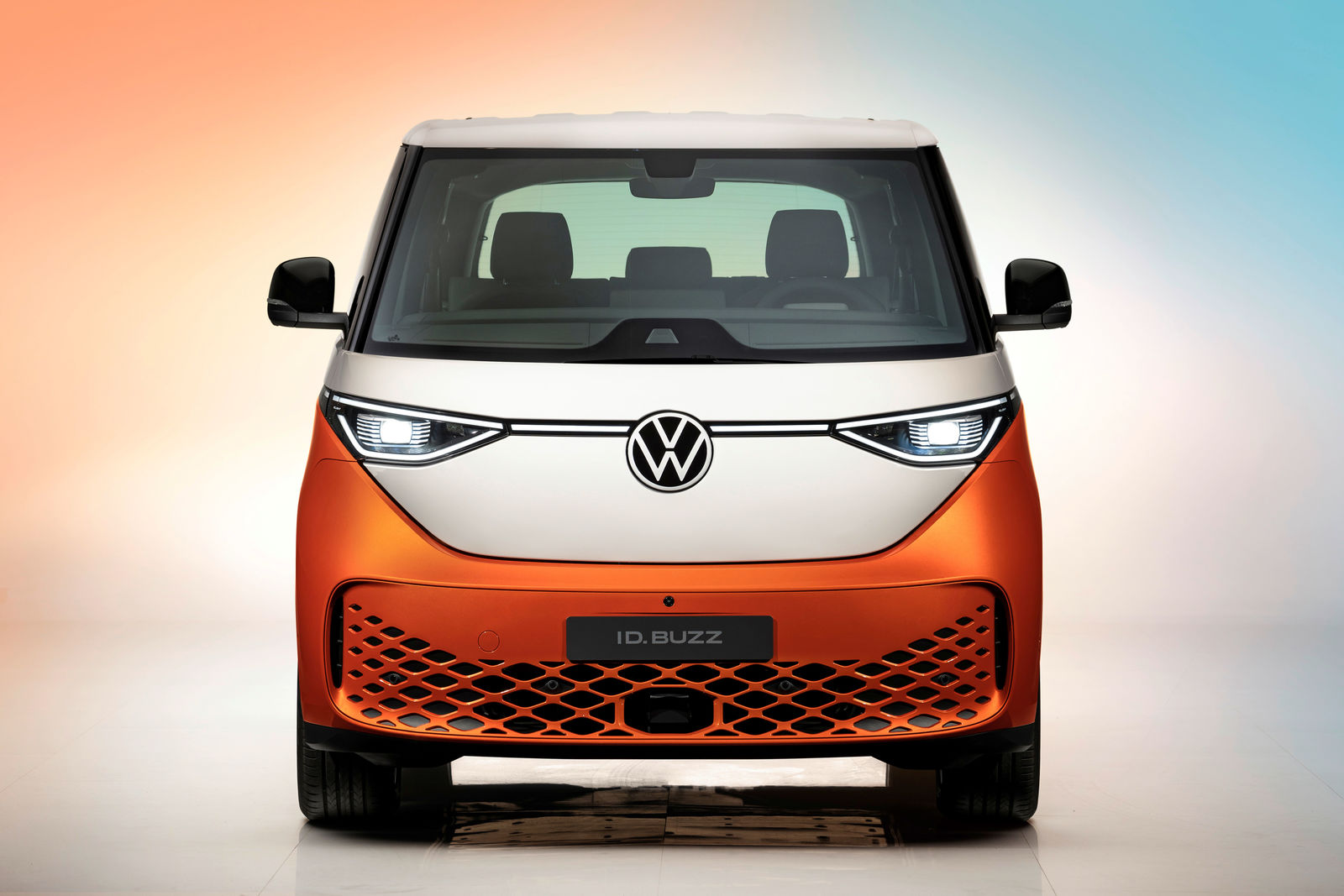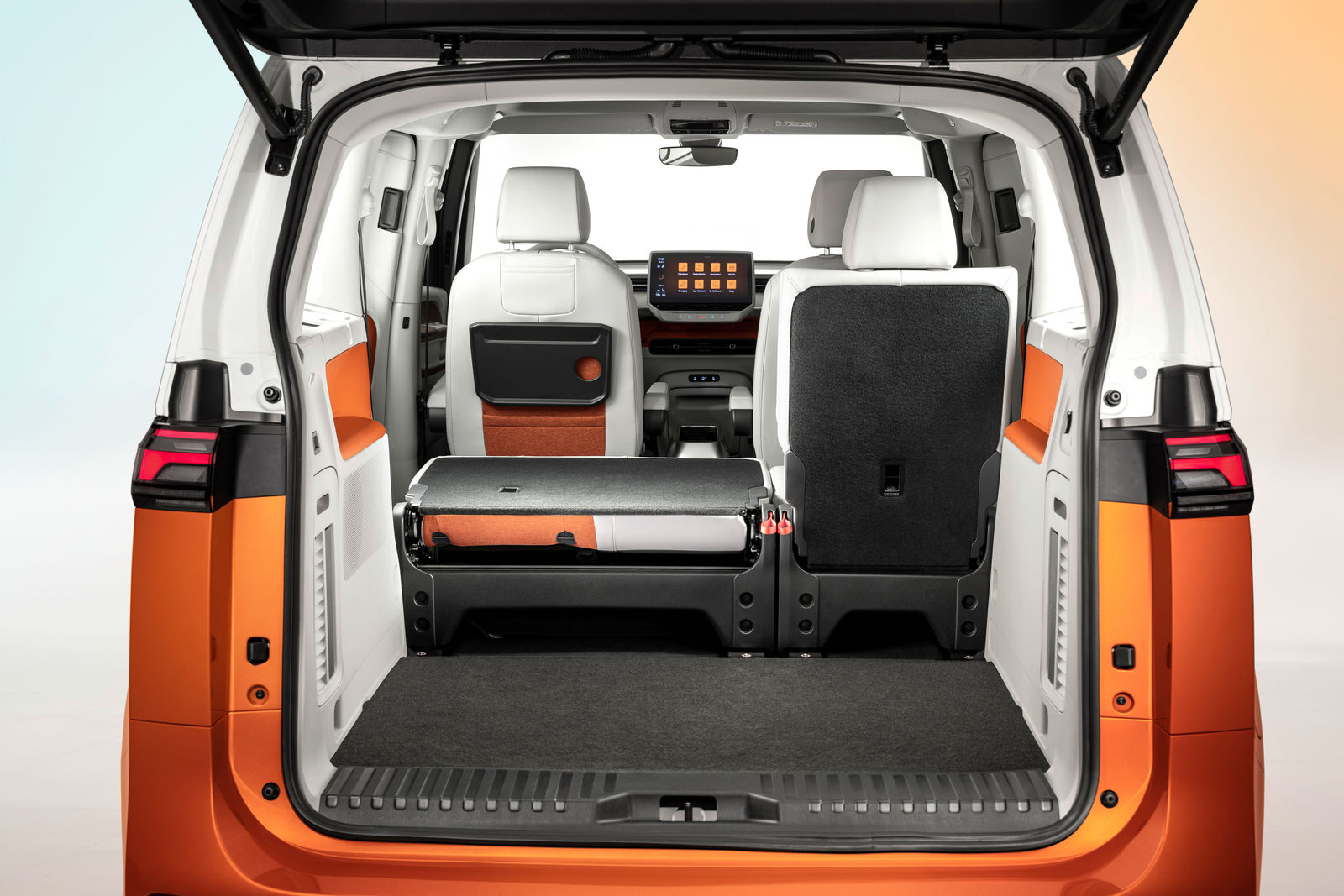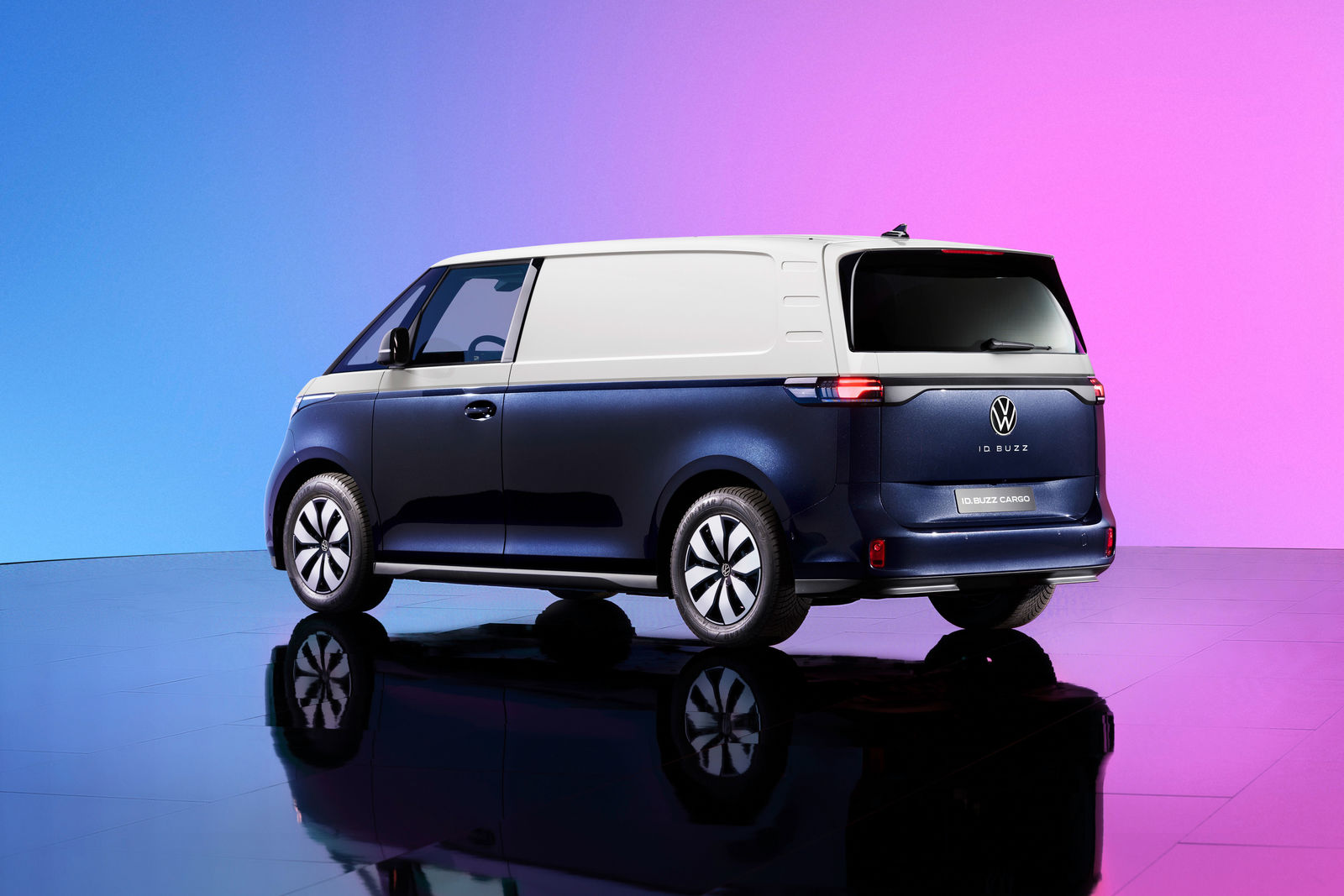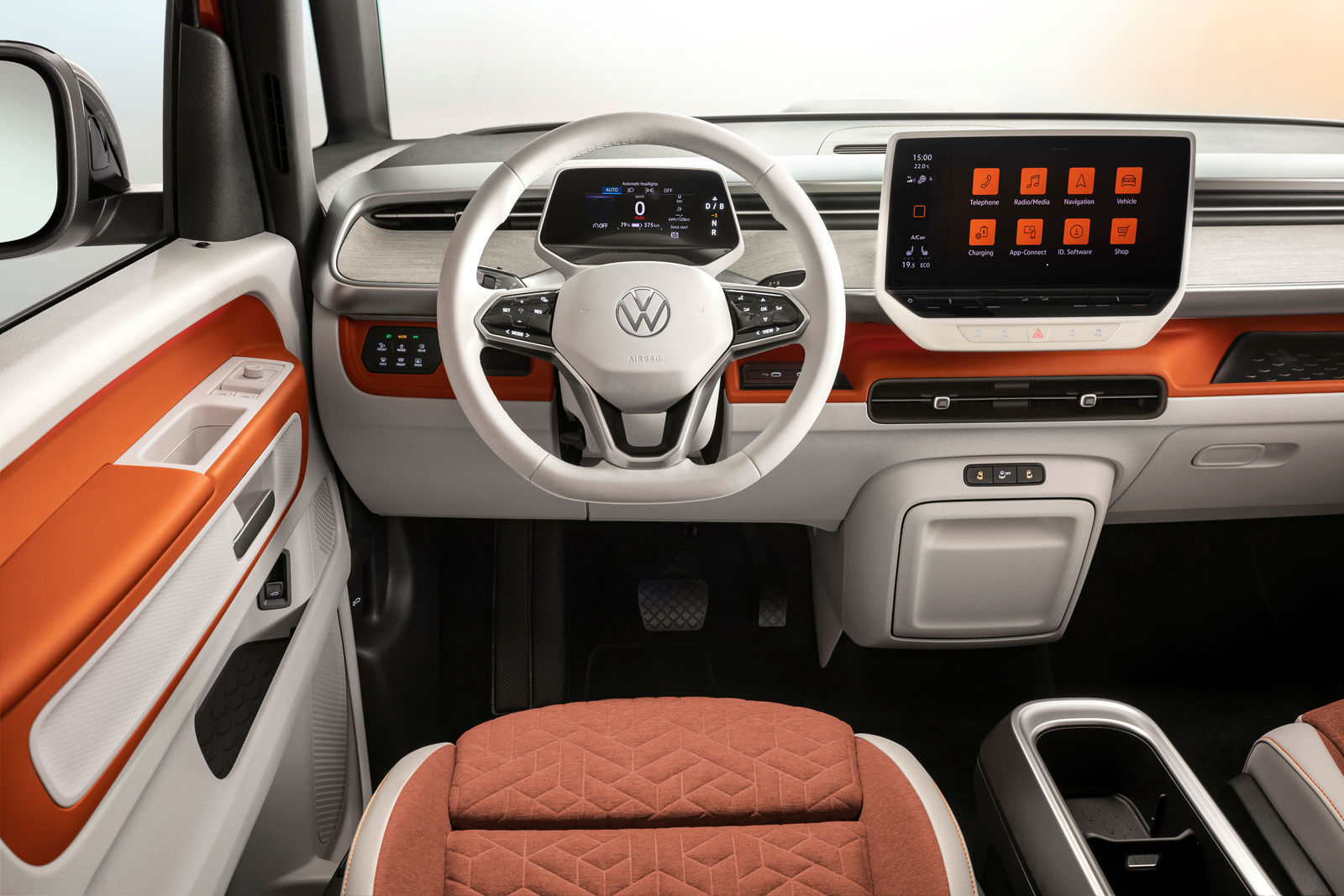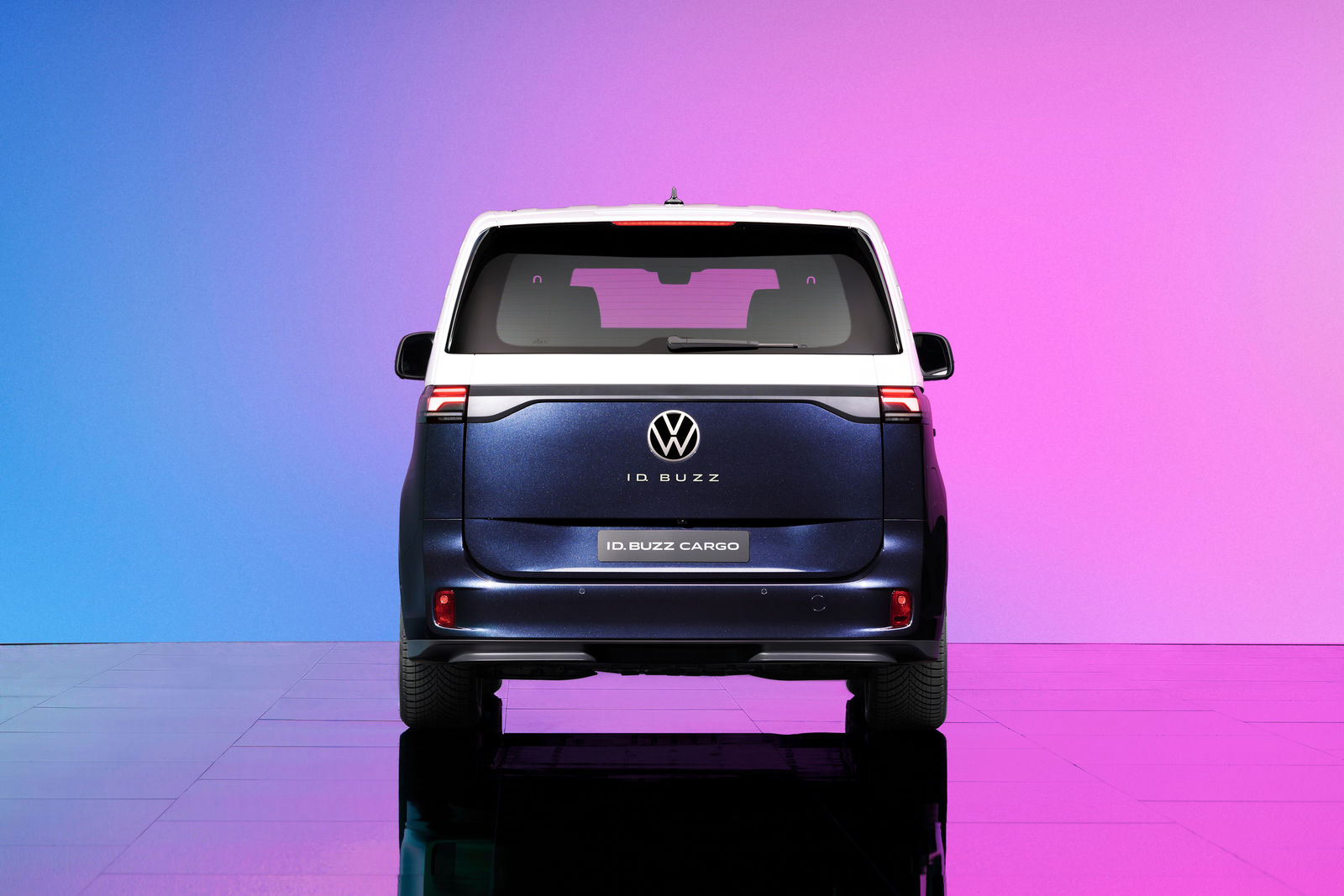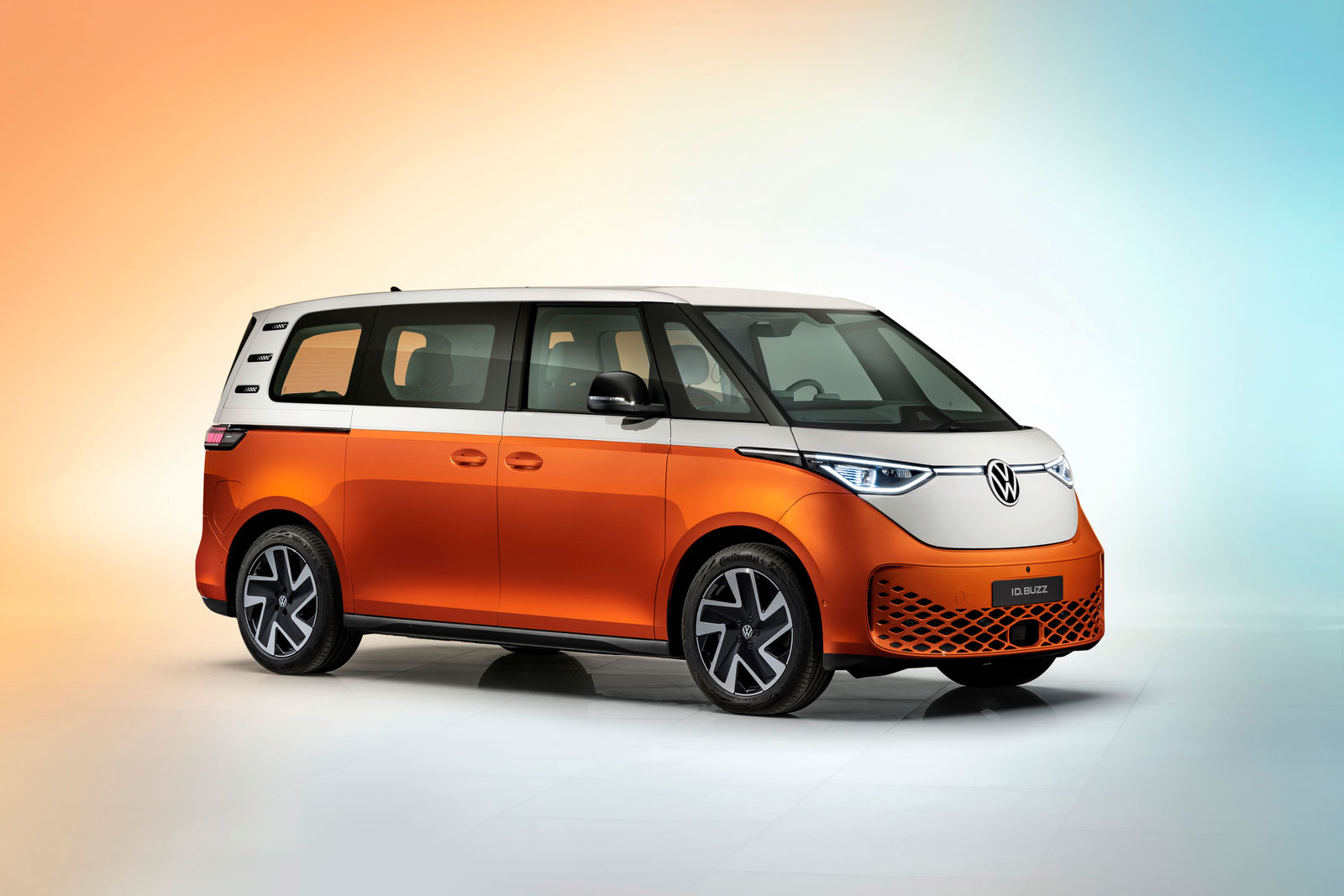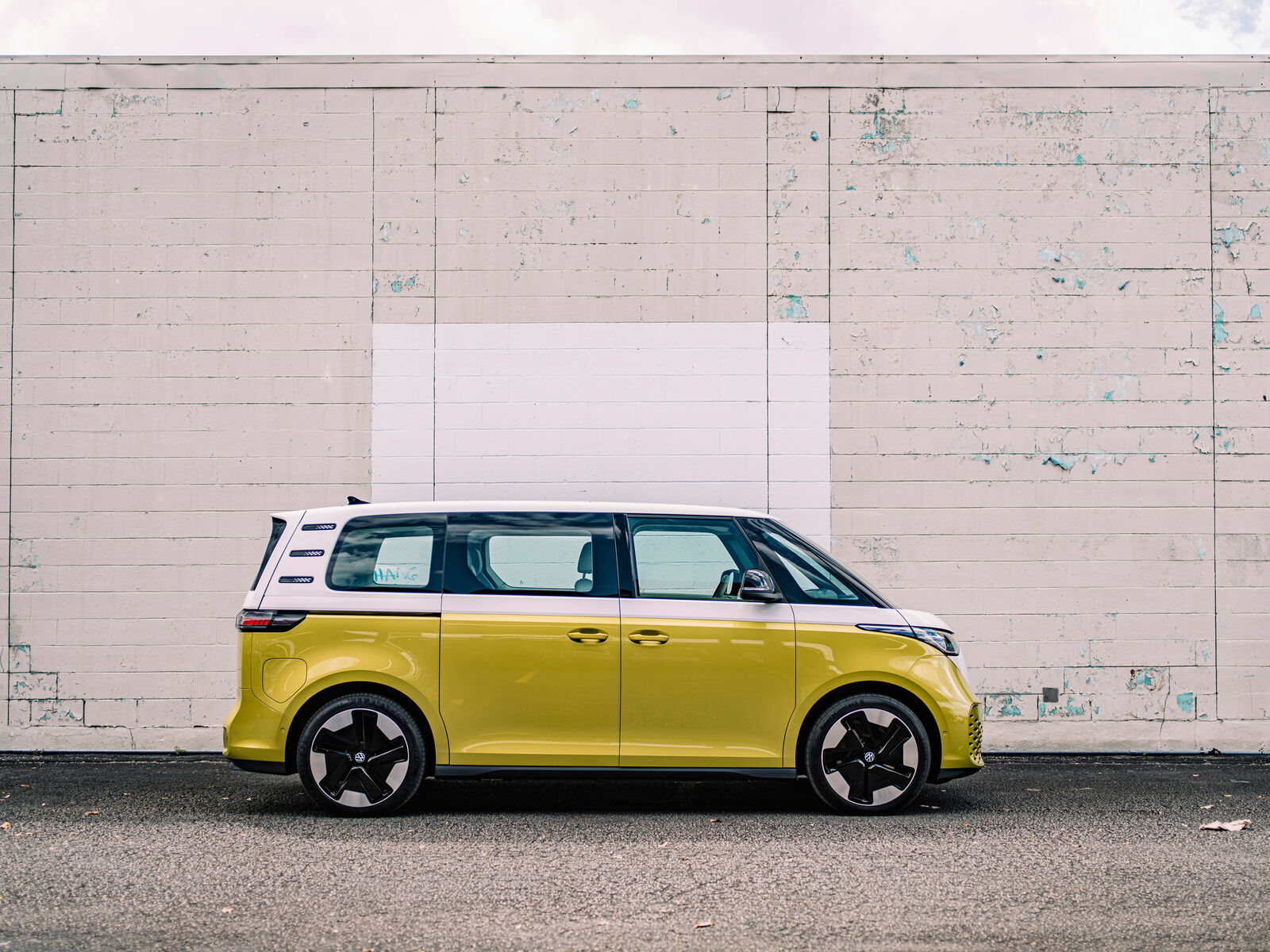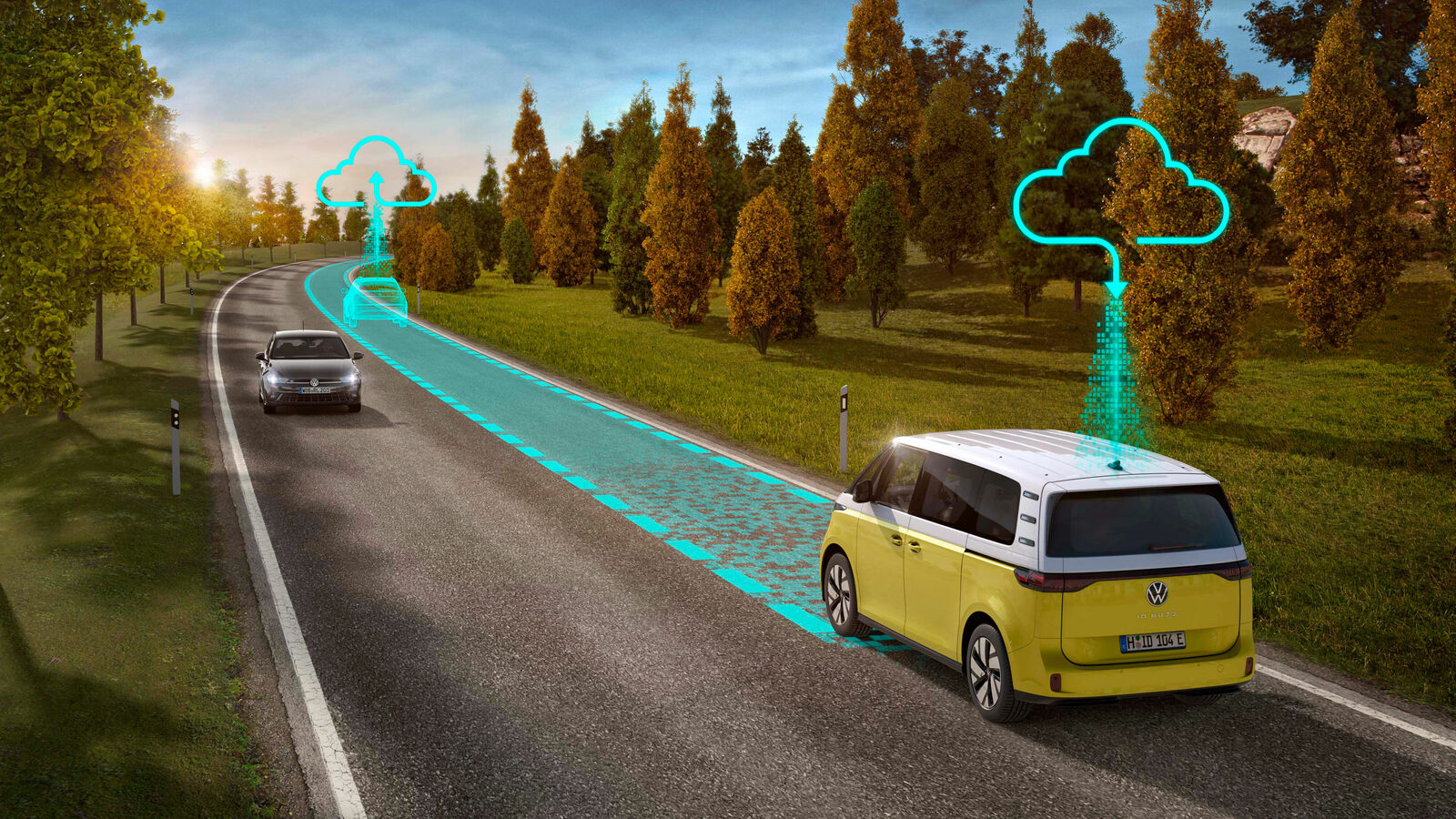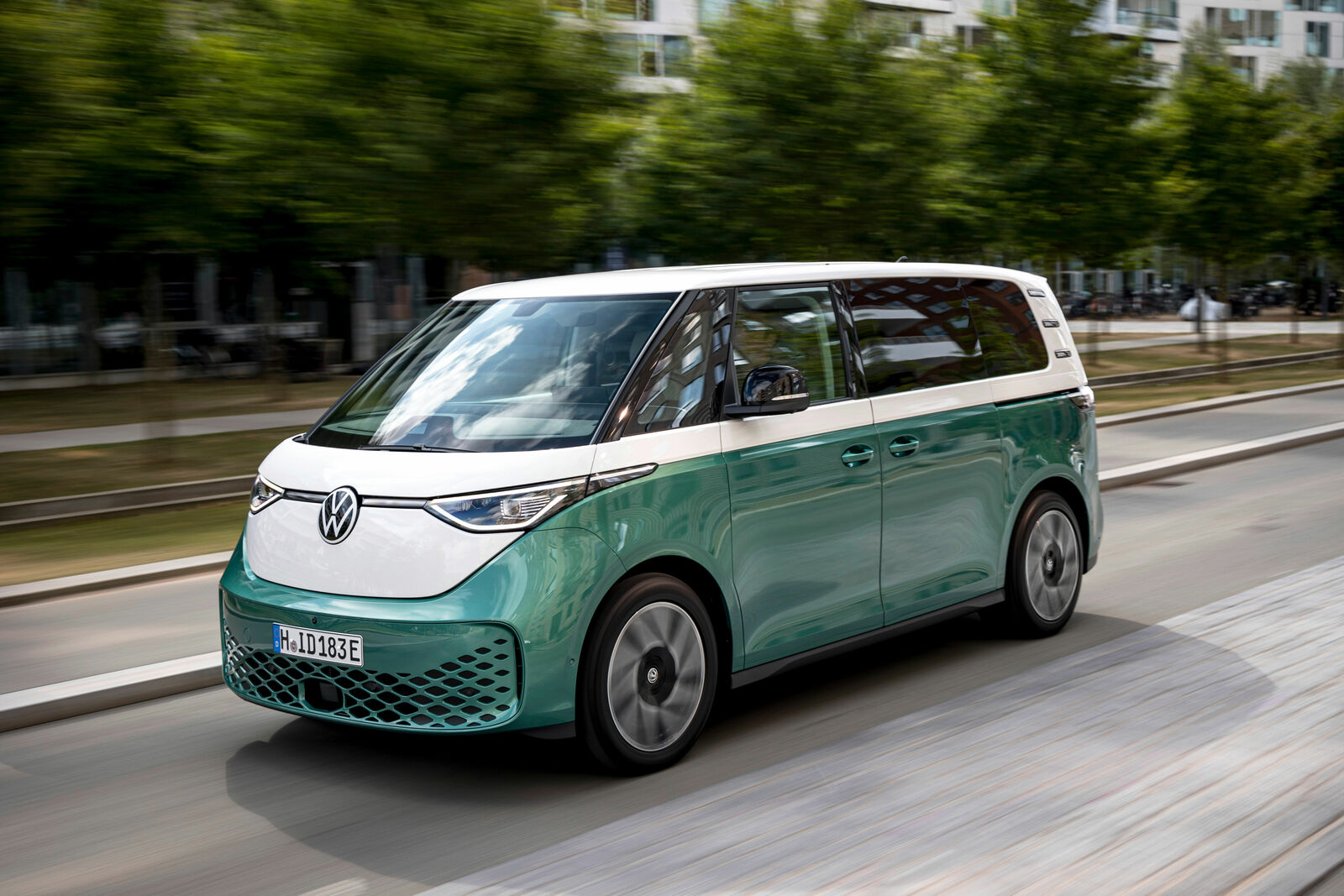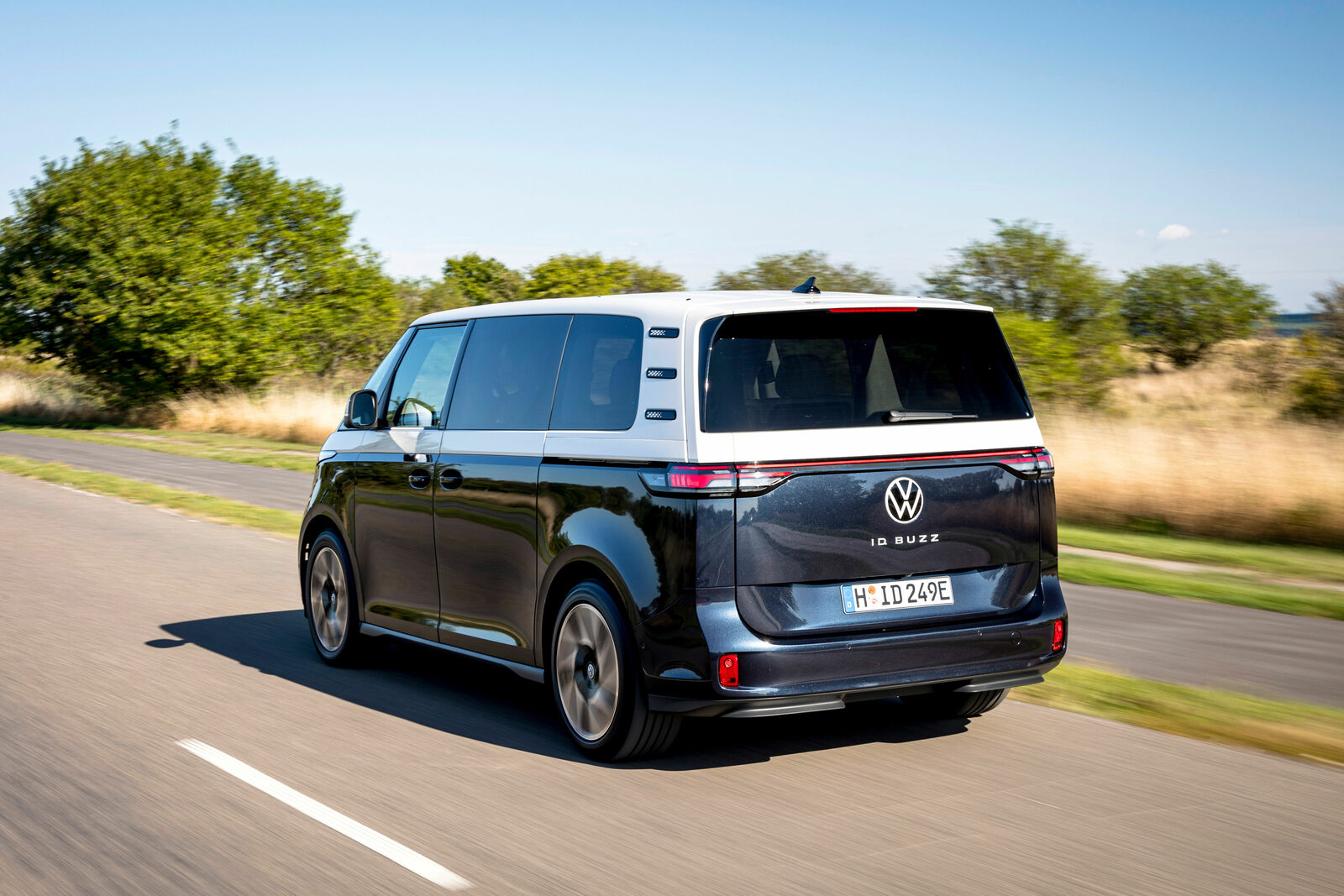- World premiere: The ID. Buzz and ID. Buzz Cargo represent Europe’s first all-electric MPV and van range
- Iconic design: The ID. Buzz is the new face of an intelligent, future-oriented, sustainable form of mobility
- Taking a new direction: Volkswagen is replacing leather in the ID. Buzz and ID. Buzz Cargo with non-animal material
- Connected and convenient: Via ‘Plug & Charge’ it will be even easier to charge the ID. Buzz when out and about
- Space for every situation in life: The ID. Buzz provides ample space for family and luggage – and as the Cargo for two euro pallets
- Market launch: still to start in Europe in 2022. North American debut with long wheelbase follows in 2023, sales from 2024
The new ID. Buzz and
ID. Buzz Cargo - The World Premiere
In brief – The short version
An icon reloaded:
The new ID. Buzz and ID. Buzz Cargo
In brief – The short version
An icon reloaded:
The new ID. Buzz and ID. Buzz Cargo
Volkswagen Commercial Vehicles and Volkswagen Passenger Cars are presenting with the new ID. Buzz and ID. Buzz Cargo one of the most advanced and sustainable vehicle concepts of the present day. The two zero-emission vehicles transfer the design of one of the greatest automobile icons – the T1 – to the era of electric mobility. The ID. Buzz is made and shipped with a carbon-neutral footprint – a first for an MPV and van range. A high percentage of recycled materials and no use of real leather in the interior complete the sustainability strategy of Volkswagen Commercial Vehicles and Volkswagen Passenger Cars realised with the ID. Buzz and ID. Buzz Cargo.
The ID. Buzz and ID. Buzz Cargo will come onto the market in the first few European countries this autumn. Advance sales are due to start in May. The European versions will come to market with a 77 kWh battery (gross energy content: 82 kWh). It provides current to a 150 kW electric motor, which drives the rear axle. The charging power when using alternating current (AC) is 11 kW. Via a CCS plug connector at a DC quick-charging station (direct current) the charging power increases to as much as 170 kW. When charged in this way, the battery charge level rises from 5 to 80% in about 30 minutes. As is the case for all models of Volkswagen’s ID. family, the new ID. Buzz and ID. Buzz Cargo are based technically on the Group’s Modular Electric Drive Kit (MEB).
Paying homage to the T1 – high-tech trendsetter with a great history
The key automotive trends of our time fuse together in the ID. Buzz and ID. Buzz Cargo to create an MPV and van range that is just as progressive as it is versatile: the electric mobility, the intelligent interlinking of the driver assist and information systems, over-the-air updates of the software, and the compatibility with completely new mobility concepts. The visual frame around all these parameters is formed by the iconic exterior design. “The ID. Buzz brings a lot of endearing charm and affinity with people back onto the road”, says Jozef Kabaň, Head of the Volkswagen Design, outlining the concept. And it is the proportions that make the ID. Buzz so unique. The designer has created a direct link with the original classic vehicle: “In the T1 you are practically sitting on top of the front axle – there’s no front overhang. While providing everything of relevance to safety and technology, the ID. Buzz has wonderfully short overhangs.” In terms of pure numbers, this is underlined by the fact that the compact overall length of 4,712 mm is accompanied by what in comparison is a very long wheelbase (2,988 mm). Design already followed function in the case of the T1, the first Bulli. Form follows function – this central tenet of automotive construction – applies to the design of the ID. Buzz too. The iconically clear forms are accompanied here by outstanding aerodynamics: the ID. Buzz has a drag coefficient of 0.285, the ID. Buzz Cargo of 0.29. That reduces energy consumption and increases range.
For a life on the move – open space with lots of room
ID. Buzz drivers and passengers experience the new Bulli feeling in an interior conceived as an open space. Jozef Kabaň: “What we have is a vehicle layout with a very logical and intuitive interior concept, plus multifaceted and variable utilisation of space.” Both ID. Buzz vehicles do indeed offer an exceptionally large amount of space on, as mentioned above, their compact vehicle footprint: in the lounge-like, friendly ambience of the MPV version five people have ample room for travelling and lots of space for their luggage (up to 1,121 litres of capacity). If the second row of seats is folded down, the load capacity increases to up to 2,205 litres. In the medium term, a six- and seven-seat configuration and an extended wheelbase will also follow. Three seats up front (alternatively two) and a fixed partition separating off the 3.9 m3 cargo space are, meanwhile, distinctive features of the configuration of the ID. Buzz Cargo. The zero-emission van can carry two euro pallets in the back.
Eternally young Bulli – Economic Miracle, Woodstock and electric mobility
Both ID. Buzz models have not only been intricately thought through, but also conceived with a great love for detail. One small example of this is, among others, the stylised silhouette of the ID. Buzz embossed into the five-seater's side and seat panels. It is an element reminiscent both of the T1 and the microbus concept vehicle – the Volkswagen show car legend unveiled in 2000 in Detroit. Reflected in the iconic exterior and interior design of the ID. Buzz and ID. Buzz Cargo is thus the history of one of the most successful van ranges, which extends from the German Economic Miracle, via the American Woodstock festival all the way to the present day. At the same time, however, Europe's first MPV and van of this class developed on a purely electric platform is advancing with its unique DNA to become the new face of an intelligent, future-oriented and sustainable form of mobility.
The Group’s electric transformation – MEB is the key technology
With the ID. Buzz the Volkswagen Group is further accelerating its transformation into one of the leading suppliers of purely electric vehicles. A key technology in this is the Modular Electric Drive Kit (MEB). The world's first scalable large production run platform for all-electric cars provides the basis across the brands for all sorts of different models and segments. At present 30 per cent of all electric vehicles in the Group are already based on the MEB. By 2025, it’s planned to be more than 80 per cent. For Volkswagen Commercial Vehicles the all-electric ID. Buzz is an important building block in order to continually reduce the carbon footprint of the whole product portfolio.
Made in Germany – high quality and safeguarding of jobs
The new ID. Buzz and ID. Buzz Cargo models are being produced by Volkswagen Commercial Vehicles at its main plant in Hannover. Since 2022, the plant has been one of the Group's high-tech locations for the production of all-electric vehicles. Production of the ID. Buzz here reaches in parts an automation level of up to 90 per cent. In parallel with the transformation of the plant the workforce is also taking a big step into the future, as many job profiles are changing: through retraining measures the workers are acquiring the necessary know-how for dealing with the new hardware and software of the ID. Buzz and of the Multivan with plug-in hybrid drive system also being made in Hannover.
The majority of the ID. Buzz electric drive system modules being supplied to the plant for this are also being made in Germany to the highest quality standards – in this case by the Group’s own Volkswagen Group Components division. The modules are being produced at the components factories in Kassel, Braunschweig, Salzgitter and Hannover. They include the electric motor, the battery system and the axles. It is thus the case that the ID. Buzz is the first model of the ID. family for which Volkswagen Group Components is making the axles as well. And this is in fact being done in an assembly hall specifically set up for the purpose at the Hannover-Barsinghausen site. There alone are 200 people employed. Long term, Hannover will also produce the battery system for the ID. Buzz. At present it is being made in Braunschweig. Today, Volkswagen Group Components is already contributing around 40 percent of the total value creation for the ID. Buzz – around 10 per cent more than for conventional models.
The initial spark – first forerunner of the ID. Buzz made its debut 50 years ago
The ID. Buzz is incidentally not the first Bulli with an electric drive system. Fifty years ago at the Hannover Trade Fair, Volkswagen was already showing a T2 powered by a rear-mounted electric motor. The maximum range of 85 kilometres showed, however, that the battery technology of this short-run project was still far from being suitable for practical use.
But even back then in 1972, the dream was born: the dream of an all-electric Bulli. Now it is becoming reality.
Media
Media contact

Tel. +49 (0) 152 22 99 56 03
